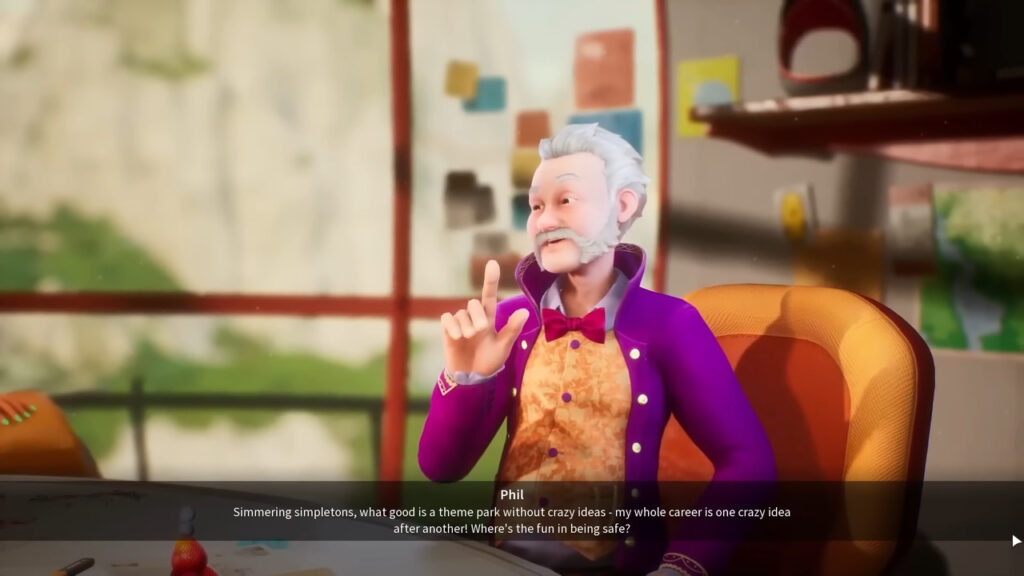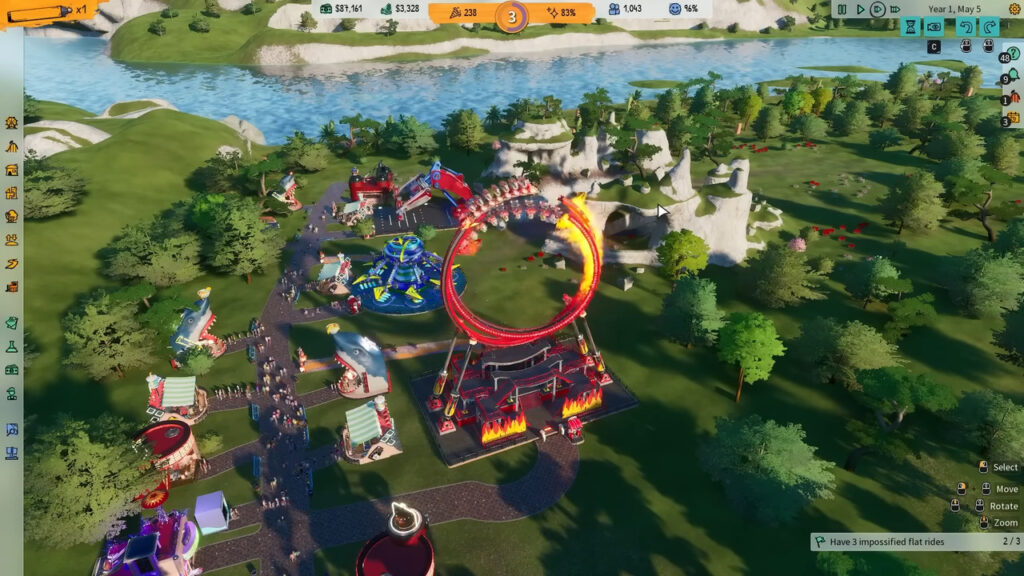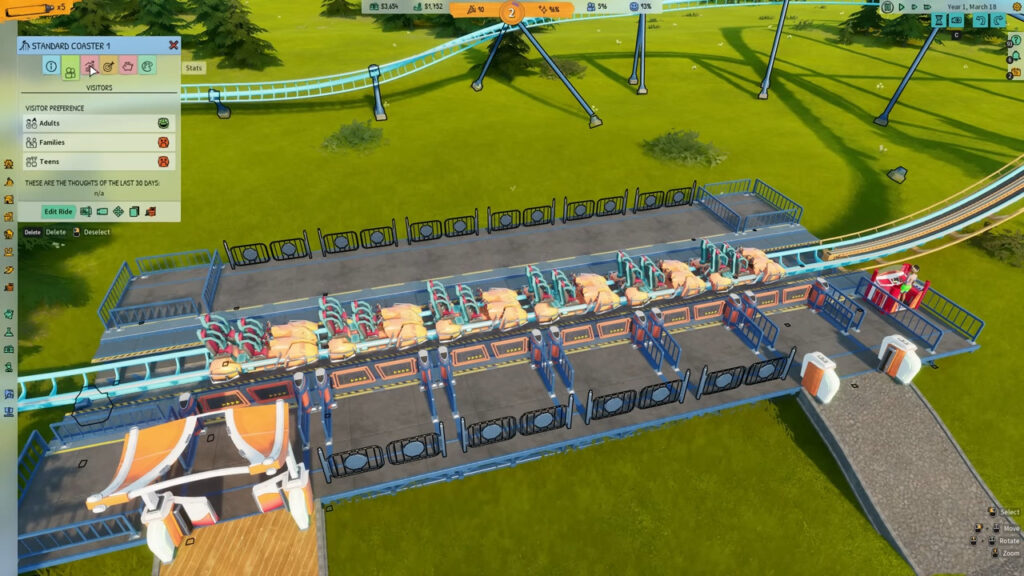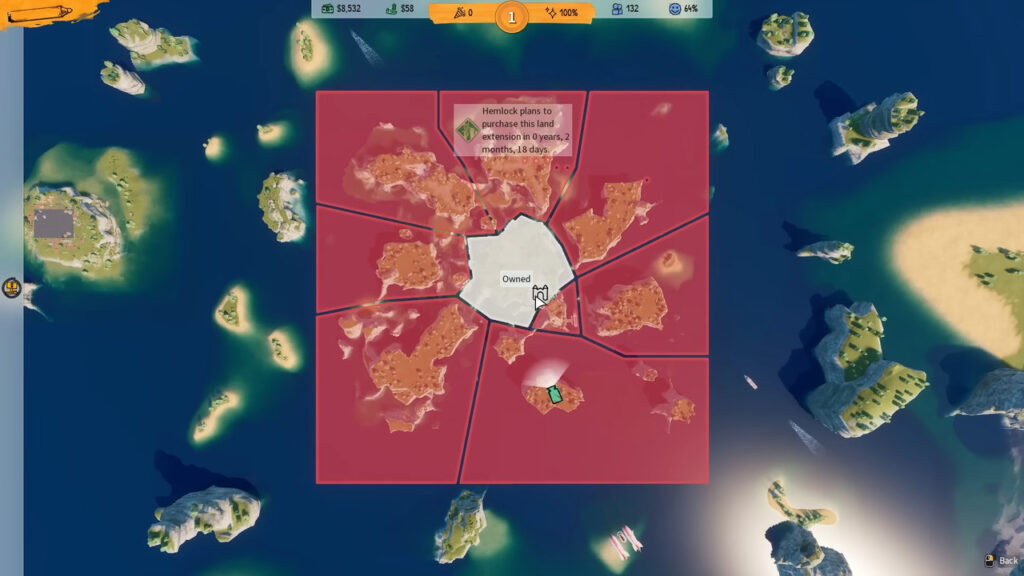
Developer: Limbic Entertainment
Publisher: Bandai Namco
Platform: PC, Xbox Series X|S, PS5
Tested on: PC
Park Beyond – Review
If you’re anything like us, chances are that the original Rollercoaster Tycoon was a staple of your childhood. It was like Chris Sawyer had captured lightning in a bottle with that original theme park simulator, because it still holds up today, despite how primitive it is by modern standards. Many theme park simulators have attempted to follow in the footsteps of Chris Sawyer’s masterpiece, but none of them were able to offer that same magic, with perhaps the notable exception of Frontier’s Planet Coaster. However, while Planet Coaster impresses with hyperrealism, it does so at the expense of the over-the-top and comical elements that made RCT so unique in the first place. Enter Park Beyond, Bandai Namco’s attempt at a theme park sim where realism and even real-life physics are thrown out the window. It sounds like a fantastic idea, but is the game an E ticket attraction or an underwhelming ride?
Story
We didn’t expect there to be a real story to Park Beyond’s campaign, so we happily took what we were presented with, even if it was a paper-thin premise. It’s your classical rags-to-riches premise, which sees you build up a theme park from the ground up, accompanied by a cast of quirky staff members, including park manager Izzy and attractions expert Phil. Surprisingly, there’s a villain present here, whose goal is to build parking lots on the locations where you want to plop down new rides. We won’t spoil how that plays out, although we figure you could probably make an educated guess.
Graphics
Bandai Namco went for a cartoony aesthetic for Park Beyond, and this works well for the over-the-top and bombastic atmosphere that the game tries to evoke. The bright colors are appealing and the rides look impressive. We also quite enjoyed visual nods and easter eggs that refer to publisher Bandai Namco itself, such as scenery and staff outfits that relate to Pac-Man that were included as part of the game’s pre-order DLC. Unfortunately, the same can’t be said for human models, which fall right into uncanny valley territory. The game’s visual performance is also abysmal, which we initially attributed to our hardware perhaps not meeting specific requirements, but from what we gather online, this has more to do with the game’s technical performance as a whole. We’ll get back to that a bit further down in this review.
Sound
While we did quite enjoy what Park Beyond had to offer in terms of soundtrack, with a healthy mix of cheerful and relaxing tunes, the true standout here is the excellent voice acting. There isn’t a whole lot of voice work outside of the tutorial and the story campaign, but the cast does a stellar job with adding some much-needed dimensions to their characters, who would have otherwise been quite flat and unremarkable.
Gameplay
On paper, Park Beyond’s concept is absolutely amazing, because of the sheer potential it has. You can take the title quite literally in this regard, as the game literally goes beyond anything you’d expect from a theme park simulator. Do you want your rollercoaster to be shot out of a cannon? How about having it literally jump over a canyon, in a thinly disguised nod to early Simpsons episodes? Well, in Park Beyond, you can let those wild dreams come true and disregard boring real-world stuff like physics. At its core, Park Beyond is still a theme park simulator, but compared to its direct competitors, the business aspect of the genre is pushed back even further in favor of unbridled creativity. Park Beyond isn’t a subtle game in the slightest. It’s bright, colorful, and over the top, which is of course fitting for the theme park setting. Things become a lot less attractive once you look past the bombastic first impression, however.
Upon booting up Park Beyond, you’re greeted with a couple of options that determine which direction your visit to your virtual theme park will take. There’s the obligatory tutorial, of course, the story campaign, and perhaps most important of all, the sandbox. If you’ve ever played a theme park simulator, you might feel confident enough to jump right in but as the game rightfully tells you, it’s a good idea to go through the motions and tackle the tutorial first anyway. It’s a good way of familiarising yourself with the game’s more unique features, including the so-called Impossify mechanic, which is what allows you to take your attractions to the next level. The tutorial is rather concise, and the campaign probably does a better job at explaining the finer mechanics, but it’s not overly long and it helps to quickly get to grips. If only Park Beyond’s control scheme wasn’t so utterly frustrating. We tried both a mouse and keyboard setup and a gaming controller, and both options felt like we were facing an uphill battle. The default control schemes felt outdated and counterintuitive and with only limited accessibility and customization options, you’re going to have to deal with quite a bit of a learning curve before you feel like you’re really in control.
Now, if the frustrating control scheme was Park Beyond’s only point of contention, we’d be more forgiving but as it stands, the game is still a bit of a glitchy technical mess. This is something that we expect to resolve itself over time as the game receives content updates, but right now it’s difficult to look past the rough edges. During our time with the game, we encountered a handful of outright crashes, but even while things were up and running, Park Beyond confronted us with bugs like story missions not progressing, forcing us to restart them, guests not wanting to go on custom attractions without explaining why, and severe instances of frame stuttering. Another issue we had has more to do with a fundamental design flaw, and that is just how much of a non-challenge the game is. This could be interpreted as the developers wanting players to focus on ride building instead of micromanaging, but if the worst thing that happens to your park is that a ride sometimes has downtime due to technical defects but automatically repairs itself, you’re left wondering why the campaign exists in the first place, given that it practically plays itself.
In Park Beyond’s defense, the more unique mechanics do leave an impression and show potential for the future. Despite the shortcomings, you can definitely do what the game promises: build elaborate rollercoasters and thrill rides that are physically impossible in real life. The interface is clear and feels accessible, and if there are actions you cannot perform, the game makes it clear why. There’s also a wide variety of pre-built rides, which you can further customize, alongside all kinds of amenities and scenery, ensuring you can build a fantastic-looking park with minimal effort. We look forward to seeing what dedicated builders will be doing, especially as the game improves through patches, updates, and the inevitable mods. Park Beyond feels like it isn’t quite finished yet, so at the time of writing, we recommend sticking with Planet Coaster, but once Park Beyond finds its footing, it might prove to be a behemoth in the genre yet.
Conclusion
Although Park Beyond has the potential to become one of the greatest theme park simulators in recent memory, it’s not quite there yet. Technical issues are rampant, the control scheme is frustrating, and the campaign lacks any modicum of intended challenge. Where the game shines is with ride building and impossification, but right now these mechanics are wasted on the glitchy technical mess that the game is. We recommend keeping an eye on this one, but not picking it up just yet, at least not until it has received some major updates down the line.










No Comments